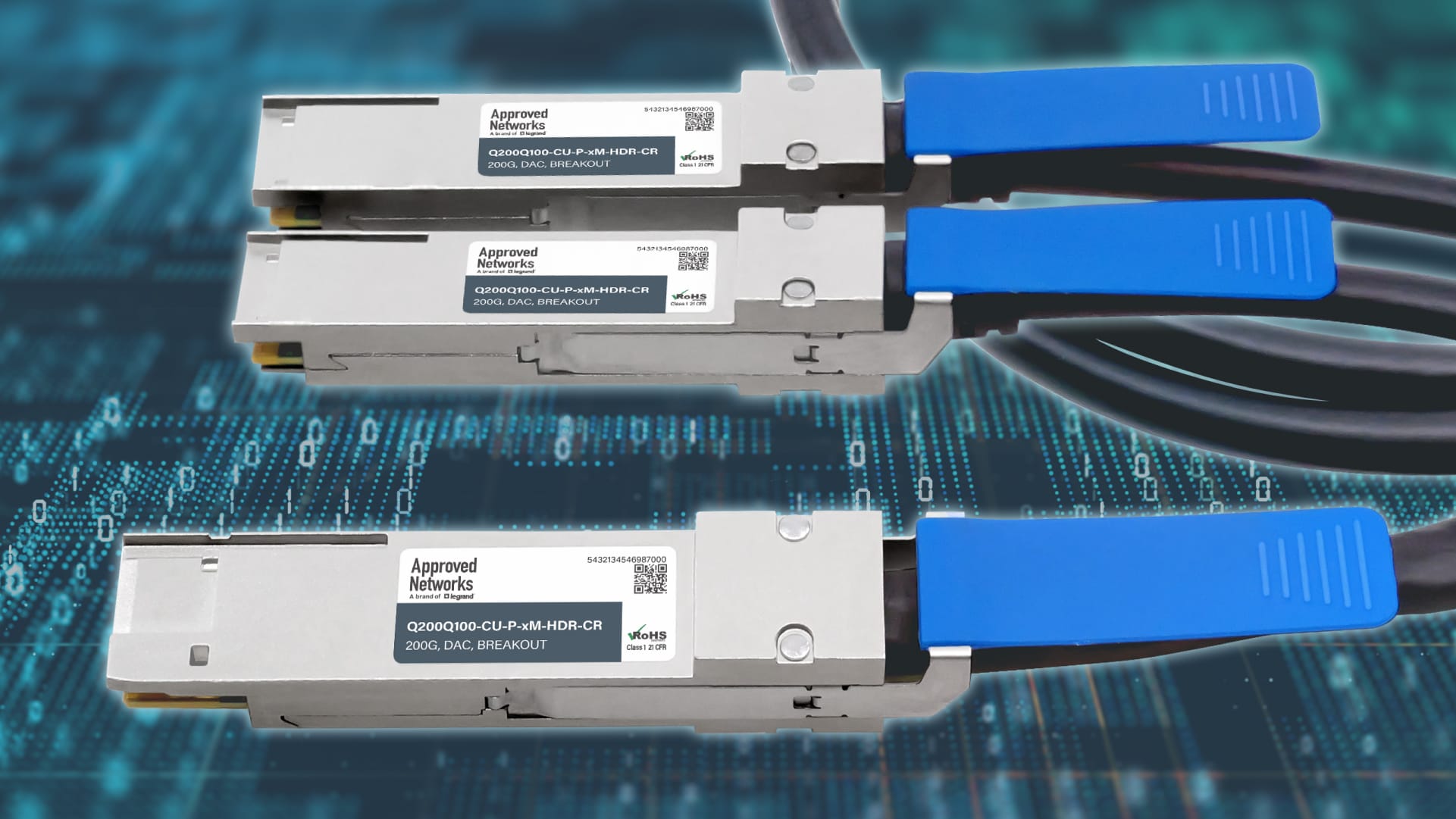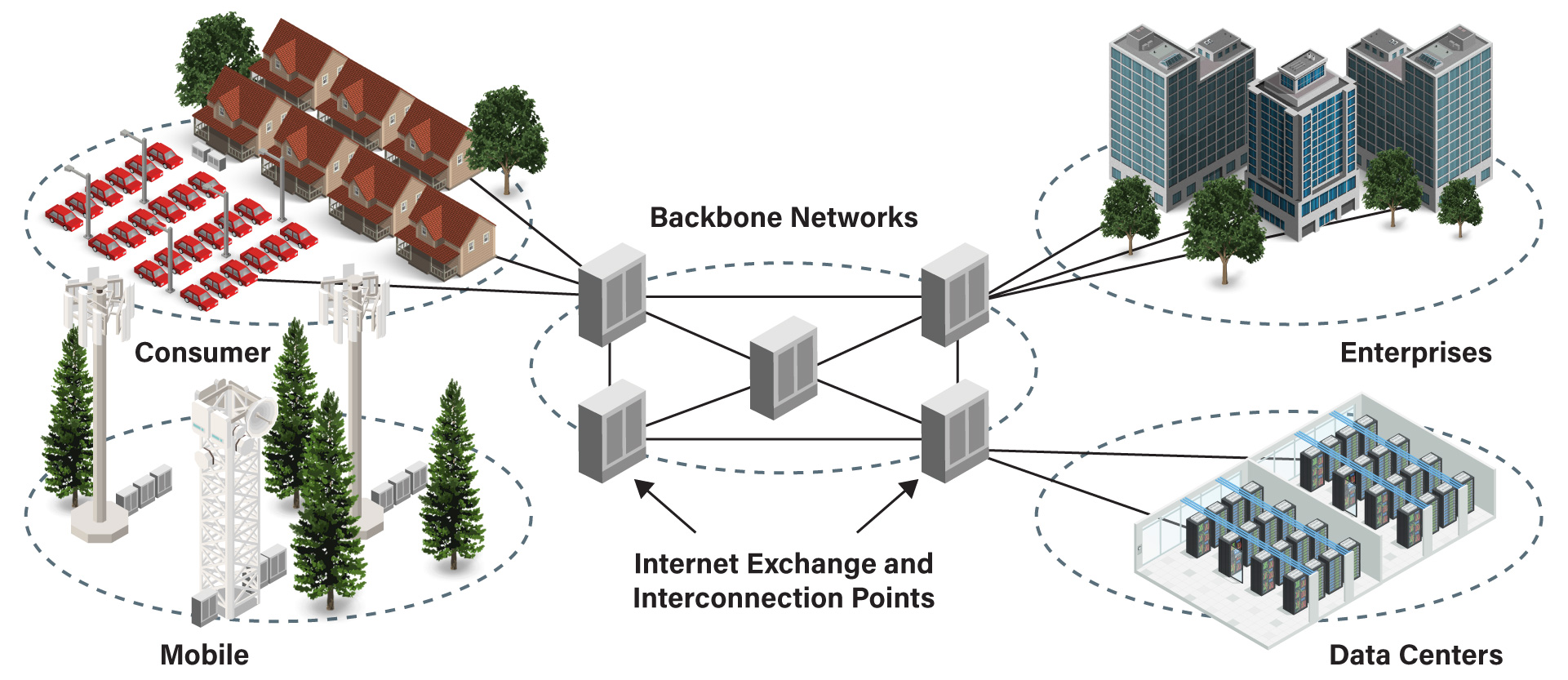Navigating the Networking Landscape: InfiniBand vs. Ethernet
Posted by Brian Patton on Sep 18, 2023

In the ever-evolving landscape of networking technologies, two prominent contenders for high-performance data transfer stand out: InfiniBand and standard Ethernet. While Ethernet has long been the de facto standard for most networking needs, InfiniBand has emerged as a powerful alternative, particularly in markets demanding unparalleled speed, low latency, and high scalability. In this article, we will delve into the benefits of InfiniBand networking over standard Ethernet, examine current market trends, and explore the industries that can significantly benefit from leveraging InfiniBand's capabilities. Additionally, we will explore why InfiniBand hasn't replaced Ethernet entirely despite its advantages.
I. Unrivaled Speed and Bandwidth:
Initially developed for supercomputing applications, InfiniBand offers exceptional data transfer rates, enabling it to meet the escalating demands of modern data-intensive workloads. With link speeds ranging from 10 to 400 gigabits per second (Gbps), InfiniBand outpaces Ethernet by a substantial margin. This speed advantage is primarily attributed to InfiniBand's high-speed serial data transmission, low overhead, and efficient transport protocols. While InfiniBand's speed advantage is significant, it is essential to note that Ethernet has had a head start regarding widespread adoption. Ethernet has been the prevailing networking technology for decades, embedded in many devices and infrastructure worldwide. This extensive Ethernet infrastructure and its compatibility with a wide range of devices have significantly affected its continued dominance [1].
II. Ultra-Low Latency:
One of InfiniBand's standout features is its remarkably low latency, making it ideal for applications that demand near real-time data transfer. Compared to Ethernet, which adds significant processing delays, InfiniBand's streamlined architecture minimizes latency, enabling faster data access and transmission. Despite InfiniBand's low-latency advantage, the existing Ethernet ecosystem and its backward compatibility with legacy systems have played a crucial role in its continued use. Many organizations have invested heavily in Ethernet infrastructure, including switches, routers, and network interface cards (NICs). Upgrading an entire network to InfiniBand would require substantial investment and may only be financially viable for some organizations.
III. Scalability and High Message Rate:
As data volumes explode and system architectures become increasingly distributed, scalability becomes a critical consideration. InfiniBand's inherent design allows for seamless scalability, enabling the creation of high-performance clusters and supercomputers with thousands of nodes. Unlike Ethernet, which encounters bottlenecks as network size expands, InfiniBand delivers consistent performance even at scale. The widespread adoption of Ethernet in various industries has led to a robust ecosystem of compatible devices and solutions. Ethernet's scalability has been proven over the years, and its support for a wide range of network topologies, such as star, ring, and mesh, has made it a versatile choice. This established Ethernet ecosystem and interoperability make it challenging for InfiniBand to completely replace Ethernet in all scenarios.

IV. Enhanced Reliability and Efficiency:
InfiniBand incorporates advanced error detection and correction mechanisms, ensuring reliable data transmission even in high-noise environments. Its built-in Quality of Service (QoS) features prioritize traffic, allowing critical applications to receive optimal network resources. In contrast, less time-sensitive traffic takes a backseat. InfiniBand's Remote Direct Memory Access (RDMA) technology also reduces CPU overhead by offloading data movement tasks to the network adapters, enhancing overall system efficiency. Ethernet, too, has evolved over time to improve reliability and efficiency. The introduction of technologies like Ethernet flow control, quality of service (QoS), and advanced error handling mechanisms have enhanced Ethernet's data integrity and network efficiency capabilities. These advancements, coupled with the massive existing Ethernet infrastructure, have made Ethernet a reliable and efficient choice for various applications.
V. Distance Limitations:
It is important to note that InfiniBand links do have distance limitations. The maximum distance that can be achieved with InfiniBand depends on the specific InfiniBand generation and the type of cable used. Copper InfiniBand (Cu-IB) cables, typically used for short-range connections within server racks, are limited to a few meters. Fiber InfiniBand (F-IB) cables, on the other hand, can support distances ranging from a few meters to several kilometers, depending on the specific InfiniBand generation and optical modules used [2].
Conclusion:
InfiniBand networking offers significant benefits over standard Ethernet in speed, low latency, scalability, reliability, and efficiency. Industries such as high-performance computing (HPC), financial services, life sciences, and AI/ML have leveraged InfiniBand's capabilities to gain a competitive edge and handle data-intensive workloads effectively.
However, the extensive adoption and compatibility of Ethernet in diverse environments, along with the established Ethernet infrastructure and backward compatibility, have contributed to its continued use. Upgrading an entire network to InfiniBand may only sometimes be financially feasible or practical for organizations already heavily invested in Ethernet infrastructure.
Ultimately, both InfiniBand and Ethernet have their strengths and serve different needs in the networking landscape. As technology advances and market demands evolve, organizations will continue to evaluate the benefits and costs of each technology to determine the most suitable networking solution for their specific requirements.
References:
Lamont Wood, "Ethernet vs. InfiniBand: Does Ethernet have a future in the data center?" TechTarget, 2020. [Online]. Available: https://searchnetworking.techtarget.com/feature/Ethernet-vs-InfiniBand-Does-Ethernet-have-a-future-in-the-data-center.
M. Rahaim and K. Drake, "InfiniBand: The Most Scalable, Highest Performing Interconnect Technology for HPC," Intel Developer Zone, 2019. [Online]. Available: https://software.intel.com/content/www/us/en/develop/articles/infiniband-the-most-scalable-highest-performing-interconnect-technology-for-hpc.html.



